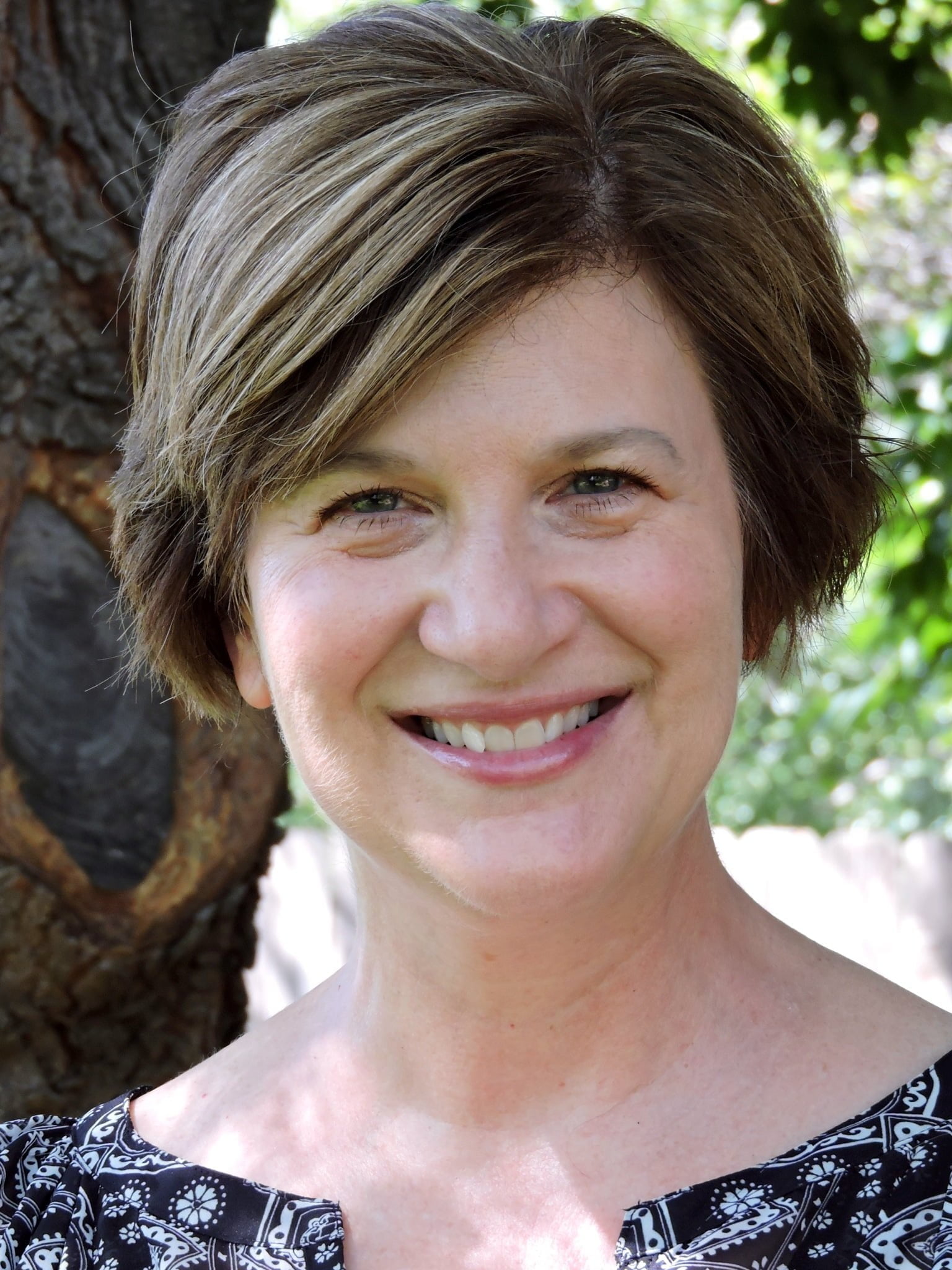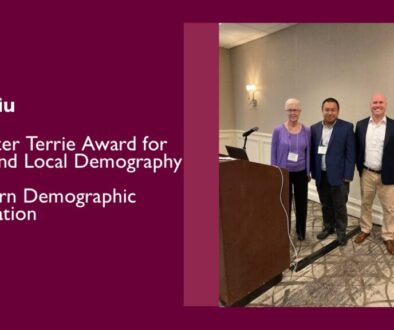Dental Health and Well-Being: A Population Health Approach
Kelly GouldThe public health dental hygienist sees the telltale signs of abscessed teeth – the infection and swelling. She hears about the pain, sleepless nights and missed school days from the six-year-old patient in her school-based dental sealant program. If only she could have treated the patient with dental sealants before the decay started. If only the patient’s family could find reliable transportation or a dental Medicaid provider. This patient will now need a dental specialist and general anesthesia to treat all the severe dental disease.
In the fall of 2017, Dr. LaShaune Johnson, a faculty member in the Master of Public Health program of Creighton University, gave an invited presentation to the Dental School at Creighton. Later, Kelly Gould and her colleague Ashley Aubry gave an invited talk about the connection between oral health and public health for the Creighton University Master of Public Health program. This exchange has spurred a growing collaboration between public health and oral health at Creighton. Here is an excerpt of a recent conversation between Kelly and LaShaune.
LaShaune: Much of our audience is familiar with the population health framework being applied to public health concerns like maternal and child health, diabetes, STIs, non-communicable diseases, etc., but I have heard you speak about the importance of including oral health in those discussions. Can you explain a bit more about that?
Kelly: Most dental diseases are considered preventable, yet tooth decay is still the most common chronic disease of childhood. By the time we reach adulthood, 90% of us will have had tooth decay. With millions suffering with oral pain and disability every year, poor oral health has become a public health crisis.
We’ve recently had some good news because there is some progress on the Healthy People 2020 oral health objectives. There are fewer school-age children with untreated tooth decay, which is something we haven’t seen for decades, but there is still no progress in reducing untreated tooth decay among teens and adults. The very young, elderly, low-income families, and racial/ethnic minorities still bear a disproportionate burden of oral disease.
LaShaune: It sounds like there is some emerging work around oral health. How does oral health connect to other areas of health?
 Kelly: The first oral health report from the Surgeon General focused our attention on the importance of good oral health. We understand now that the mouth cannot be separated from the rest of the body. Poor oral health is related to cardiovascular disease, stroke, pre-term birth and low-birth weight. We know individuals with periodontal (gum) disease often have more poorly controlled diabetes, and, at the same time, diabetes is a risk factor for gum disease. Infections from tooth decay can cause pain, infection, disrupted sleep, and difficulty eating, chewing or speaking. If tooth decay is left untreated, it can lead to life-threatening infection and even death as it did in the case of 12-year-old Deamonte Driver in Maryland.
Kelly: The first oral health report from the Surgeon General focused our attention on the importance of good oral health. We understand now that the mouth cannot be separated from the rest of the body. Poor oral health is related to cardiovascular disease, stroke, pre-term birth and low-birth weight. We know individuals with periodontal (gum) disease often have more poorly controlled diabetes, and, at the same time, diabetes is a risk factor for gum disease. Infections from tooth decay can cause pain, infection, disrupted sleep, and difficulty eating, chewing or speaking. If tooth decay is left untreated, it can lead to life-threatening infection and even death as it did in the case of 12-year-old Deamonte Driver in Maryland.
LaShaune: In the population health framework, we are challenged to think about the broader social determinants of health and the social, economic, and political impacts of health disparities. Are there examples of oral health issues that fit this framework?
Kelly: Having poor oral health is also an employability issue. Think about how we judge people by the appearance of their teeth. If they are missing teeth, they are less likely to get a job, especially if the job requires interacting with the public. This discrimination is worse for low-income adults, because most states do not provide a dental Medicaid benefit. If states do offer it, there are strict limits, and many aren’t able to find a dentist who is a Medicaid provider. And there is no dental benefit included in Medicare.
We know a lack of insurance is a barrier to accessing dental care and, without it, many resort to an emergency department–but an ER cannot provide any definitive dental treatment, as dentists are not incorporated in medical or hospital settings.
LaShaune: In your previous talk, you mentioned oral health being a life course issue. Can you explain more?
Kelly: Oral health is important across the life span as soon as the first tooth erupts in the mouth around six months of age. There are critical periods of development that can predict whether an individual will have a lifetime of good or poor oral health. For example, primary (baby) teeth hold space for the permanent teeth. If primary teeth are lost too early, the permanent teeth can become crowded and difficult to maintain and keep healthy. Once you lose permanent teeth, you lose function, and it can be a downward spiral.
Oral disease is both chronic and cumulative. We know low childhood socioeconomic status is a predictor of poor oral health later in life. Children with poor oral health have more pain, more school absences and lower academic performance, which can also have lifelong consequences.
LaShaune: In addition to the life span concerns, what are some other areas of interest that are important for oral health?
Kelly: Geography is also important. Over 51 million people live in a Dental Care Health Professional Shortage Area, and many are in rural or poor urban areas where there are few if any dentists. If patients do happen to find a dentist in the area, there can be other barriers to access, such as the high cost of dental care, lack of dental insurance, or lack of culturally appropriate care.
LaShaune: Can you give us an example of evidence-based interventions that address oral health?
Kelly: One proven intervention to address access problems is a school-based dental sealant program. The Community Preventive Services Task Force strongly recommends these programs, especially for low-income children who are less likely to visit a dentist. The children who get dental sealants in school have half the amount of tooth decay after four years compared to those who did not.
In our community, the Child Oral Health Collaborative members offer school-based dental services to 4,700 children annually in 31 schools where at least 75% of the students are eligible for the free/reduced lunch program.
LaShaune: Oral health seems to fit well with the population health framework, and it appears that there are numerous possibilities for using traditional public health methods in understanding oral health disparities. What are suggestions for resources for understanding the connections linking public health and oral health?
Kelly: To make more gains, we will need to use population health approaches across the professions. We are starting to see some models with medical clinics using a population health management approach to address oral health in their diabetic patients in partnership with a local dental practice.
An important resource to prepare us for collaboration in oral health is the Core Competencies for Interprofessional Collaborative Practice shared by all health science and public health professionals. The document provides guidance for training in team work. This is done by building on each discipline’s respective competencies and adding competencies that create effective teams and team members who can improve both individual and population health.
Another excellent resource is a national online curriculum Smiles for Life.
About the authors
Kelly Gould
Kelly A. Gould, MPH, RDH is an Assistant Professor and Director of Extramural Programs at Creighton University in the Community and Preventive Dentistry department. She also serves as the Oral Health Services Coordinator for Building Healthy Futures, a local non-profit that facilitates delivery of school-based dental services. She focuses her teaching on population health, community engagement and improving access to health care for under-served populations.
LaShaune Johnson
LaShaune Johnson, PhD, is an assistant professor at Creighton University in the Master of Public Health and Master of Medical Anthropology programs. She teaches courses about community-based participatory research methods and cancer; and focuses her research on breast cancer literacy, communication, and outcome disparities for Black women, and the impact these disparities have on the family system.







January 3, 2020 @ 3:46 am
Happy to read the article on public dental health issues! You have chosen a good topic to discuss with everyone. Keep posting these types of articles! https://www.woburndental.com/
May 23, 2018 @ 1:26 pm
Thanks for the informative oral health presentation and discussing the significance of this population/public health issue.